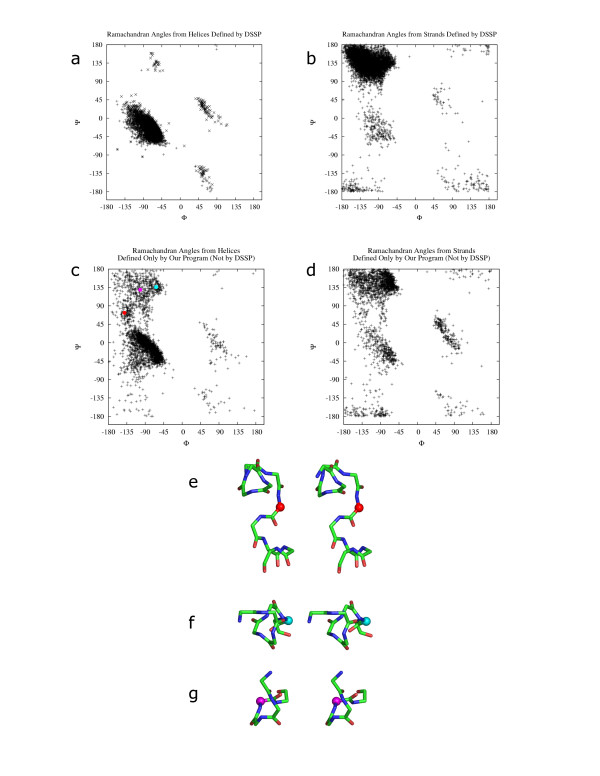Figure 1.
Ramachandran angles from helices and β-strands defined by DSSP and our program. The culled PDB set (described in methods) was used for this calculation. Figs. a and b show the Ramachandran angles obtained respectively from helices and β-strands defined by DSSP. Figs. c and d show the Ramachandran angles obtained respectively from helices and β-strands not defined by DSSP but defined by our program. φ and ψ angles for figs. a and b were obtained from DSSP output. φ and ψ angles for figs. c and d were calculated from output of our algorithm such that φ is torsion angle between residues i-1 and i, and ψ is torsion angle between residues i and i+1 where residues at positions i-1, i and i+1 are part of the same SSE. α, π and 310 helices were used for obtaining data shown in fig. a (DSSP definition 'H', 'I', 'G' respectively). β-Strands were used for obtaining data shown in fig. b (DSSP definition 'E'). Three regions of over-predicted points by our method are shown with an example from each region. Figs. e, f and g show stereo diagrams of parts of three helices respectively from "1b × 4" (chain A, residue 175 in red), "1iom" (chain A, residue 73 in cyan) and "1 × 7d" (chain A, residue 180 in magenta). φ and ψ angles from the residues under study are marked red, cyan and magenta in fig. c. The residues with φ and ψ points highlighted in fig. c are shown as spheres in the same colors in figs. e, f and g.

